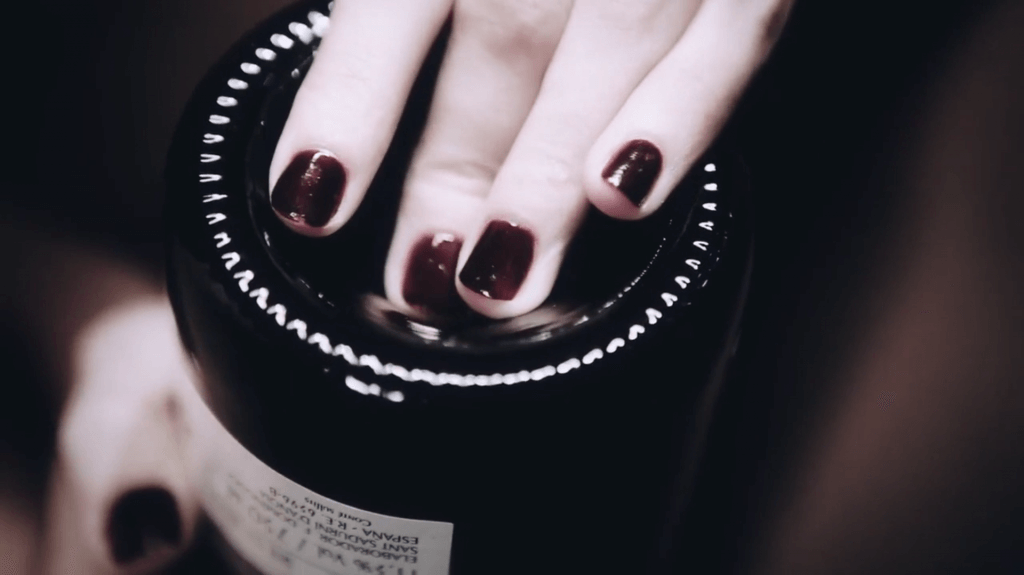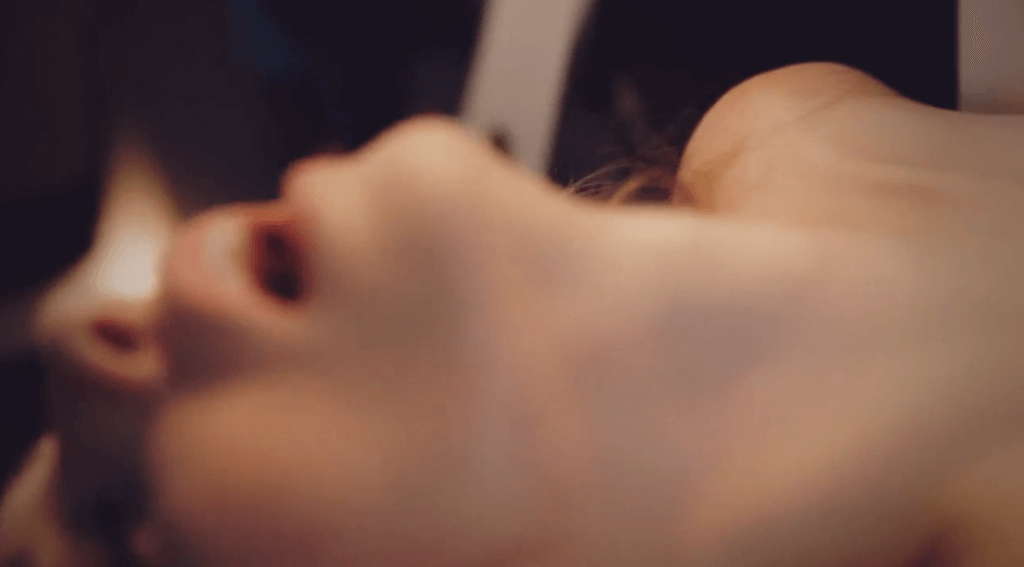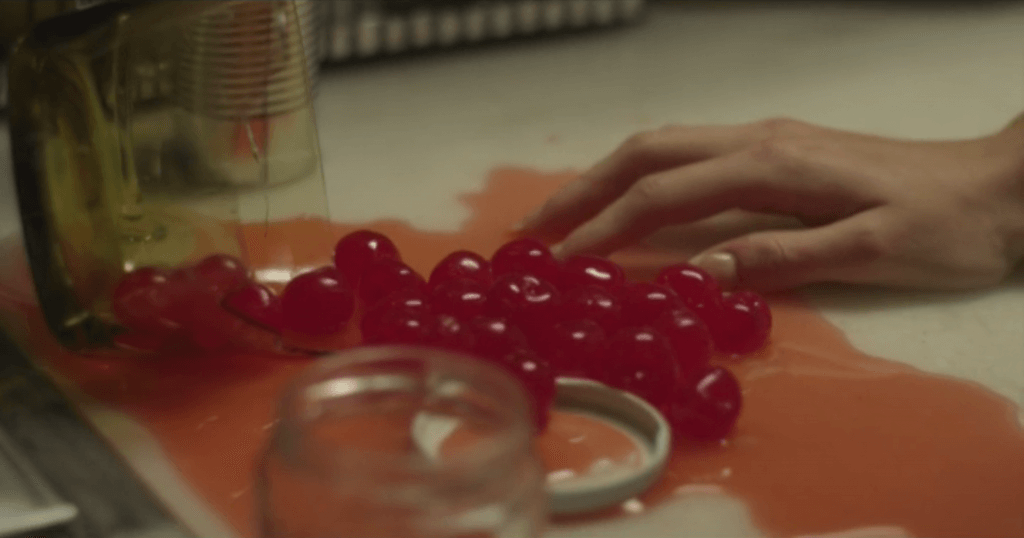Ábreme la vena
abundante…
que la tengo estrecha
Déjame una brecha
deja que me dure
el goce
del hombre delante
María Calcaño. Deseo (1935).
Some discourses allow glimpsing at the structuring traits of a time. “The truth” of a time is revealed not as much by its symbolic regulations as by its manifestations on the bodies. Although both keys are inseparable for thinking a specific culture, a substantial difference determines them: The former places itself on the arbitrary dimension of sense (an established order), the latter, instead, is due to the jouissance of the body (the singular manifestations that arise in it). Let us remember that Freud invented psychoanalysis on the basis of the bodily manifestations of his hysterical female patients, who had been pre-diagnosed by Victorian science as “ill with nervosity.” What Freud uncovers is that behind the paralyzed bodies, the conversions, and muteness of these patients, was a body responding to the symbolic impositions of a time, which demanded brutal continence—even more so from women—of the sexual impulse.

It was thanks to this new saying that Freud gave sexuality its trademark status, for all repression insists on curbing the pulsional jouissance (if we were animals, we’d call it instinctive) of the body. The wittiness of his discovery was proving that the libidinal discharge produced by the encounter with sexuality (this includes sex, but also all encounter of the subject with his/her own sex, and with the other sexed being—namely, all encounter with a body) does not disappear before the exertion of repression, but it remains within the body—unconsciously—until it manages to lodge itself and find its discharge somehow. This discharge always oscillates between speech and the body. This is the place psychoanalysis gives to the discontents that are covered up by the condition of being beings of language.
But if the discourse that regulated sexuality and insisted on setting barriers on the jouissance of the body was, at the time of Freud’s, the key to locating the discontents of an epoch, what can we say about this one of ours, which, on the contrary, insists on inviting us to a limitless consumption of images of enjoying bodies? Porn is one of the discourses avouching this question and which shows that we are, as a matter of fact, before an epochal shift. That is precisely what Jacques-Alain Miller (Lacan’s disciple and leading figure of the contemporary psychoanalytical movement of the Lacanian orientation) points out by asking: How could we fail to see that there has been a break, when Freud invented psychoanalysis under the aegis of Queen Victoria’s morality, whereas this time knows the mass circulation of porn? For Miller, pornography is nothing but «coitus on show in a spectacle that is accessible to anyone on the web by means of a simple click of the mouse (…) There is no better indicator of the absence of sexual relation in the real than the imaginary profusion of the body as it devotes itself to being given and being taken.» [1]
It is true that the porn industry has been one of those commodities that the permissive twenty-first century has produced for the purpose of blocking the anxiety generated by the difficulties of bonding with another sexed being. Its potency and goofiness lie in that it is a discourse weaved solely around the phallic jouissance, that is to say (simplified), that the whole of the pleasure is circumscribed to the male organ (or to the fetish object)—the axis from which other organs may or may not achieve satisfaction, but where the burst of pleasure always finishes. The place of the phallus is not necessarily that of the penis, but it is a single outlined localized area. We shall go back to this in a moment.
I will now ask you to open up the imagery of your own experience with porn to our interaction—it could be more fun.
A plumber goes into a house where he is received by a scarcely dressed blonde (in the first ones they were always blonde, globalization has allowed to diversify the market). Without saying a word (as if the smooth jazz said it all), she finds herself two minutes later performing oral sex on the plumber. The rough thrusts of the penis are proof that they are both getting incomparable pleasure. She screams (Oh, my God!) and the assertion gets confirmed. The scene—which may last anywhere from a few minutes (even .gifs for cell-phones) to one, two or three hours—usually ends with the widely-known cumshot: proof of a true and ideal sexual feat, thus complying with the fiction that sexual relation exists.
Porn is massively consumed and one could say it is made for men. This assertion seems to agree with the interpretation of feminine adult filmmaker Erika Lust, who entered the pornographic film industry with another approach a little over a decade ago. If you still don’t know her, let me introduce you: erikalust.com. It will be up to you to stroll around the aesthetic, sensory, political, and subjective universe she proposes. It is vast, complex, and, in Erika’s words, essential. Lust denounces that porn has always been in the hands of the masculine discourse; moreover, it does not portray female pleasure and the women incarnating their roles on traditional films do not seem to be enjoying themselves too much. This political scientist who graduated from Lund University and specialized in Human Rights and Feminism, is carrying forward an aesthetic political project of making a different kind of porn, one made by women—or, as she defines it: telling stories with a camera from «a female gaze.»[2]


Is this aesthetic political project really feminine pornographic cinema? Given that the discourse of mainstream porn is so predictable and that this other porn makes use of the same formats and, deep down, the same argument, what makes this other porn “feminine”? Lastly, how to understand this female gaze? what does it tell us? As a contemplator of Lust’s work, I’d like to venture a few theoretical remarks.
Lust—as in lasciviousness—is also one of the possible German translations of the word jouissance. This fact, besides providing an amusing pun, is a wonderful—or at least useful—way to introduce our argument.
For psychoanalysis of the Lacanian orientation, gender (male and female) is one thing, and sexual differentiation is another. This latter dimension determines the relationship of the sexed subject with language. For Lacan, there are only two ways of inhabiting language as sexed beings: on the side of phallic jouissance or on that of feminine jouissance—being able to take up either position under certain circumstances. Phallic jouissance stands for the symbolic whole (all that can be grasped with words), for the universal referent (the father), for the ideal (the most powerful, the best, the gutsiest, the toughest), for the One (the only possibility, contained and limited within the closed figure of the circle), for regulation (the norm). That is what is mostly symbolized with the erection of the male organ, hence its reference to the phallus —not literally, but in terms of function. All that is governed by these principles is regarded as phallic jouissance.
The feminine jouissance or Other jouissance, in turn, is the jouissance that falls beyond its phallic counterpart: what is not symbolizable (what cannot be said with words), what has no precise referent (what cannot be universalized), what is impossible to locate in a specific organ (be it the penis, the vagina or other organ), what opens up to the void and not to completeness or totality (an open circle through which something leaks), what is limitless and escapes all possible regulation. It is a supplementary jouissance to the phallic one, that is, it does not exclude it (does not oppose it); on the contrary, it is a not-all jouissance because, as said, it goes beyond the phallic jouissance—they cohabit, but feminine jouissance goes beyond. If phallic jouissance incarnates totality, feminine jouissance does the same as non-totality: it is not-all phallic jouissance.

For better understanding this statement, it might be worth to turn to the myth of Tiresias. Ovid tells that Hera and Zeus were once having an argument over who felt more pleasure in sex: man or woman. Tiresias was, incidentally, passing by the Olympus and since he had had the experience of incarnating both sexes, he was consulted on the matter. Zeus claimed that the woman experienced more pleasure during sex than the man; Hera, in turn, held the opposite. Upon inquiry, Tiresias answered: “Of ten parts a man enjoys one only.” His answer, even though appointing full access to pleasure on the side of the woman, offended Hera to the point of irritation, who then judged and blinded him for having the simplicity of setting a measure for jouissance. This example portrays quite well the non-symbolizable condition, the impossibility to measure and regulate feminine jouissance.


Lacanian psychoanalyst Carolina Rovere claims that what is feminine about this jouissance is neither the women nor the feminism, but a place from which the subject’s jouissance operates in order to name three fundamental elements that escape the phallic function: the void, the limitless, and the absence of referents.[3] This supplementary jouissance is adjourned to the woman because of her own relationship with the absence of the penis—the organ from which all referential and regulatory systems (at least in the Western world) of culture have been deployed.
But what is novel and profoundly turned to subjectivity about this psychoanalytical take is that the jouissance of the sexes—as it is a matter of language, not biology—is not established by genra, but instead, in some cases, both a man or a woman might occupy the place of either jouissance at a given moment. Lacan spoke of the jouissance that the mystics experienced as placed on the side of feminine jouissance. This Other jouissance is eventually available to the realm of men. Lacan would say that a man in love is a feminized man. This jouissance is also the place from which artists operate—and this raises yet another flag in our path.
I do not doubt—I wouldn’t want to end up blind—that Erika Lust’s feat of producing a feminine porn—or so I feel it—is driven by her feminist aesthetic-political project, and yet, my connection to the feminine in her work is as it portrays a work of art. Lust responds to the measuring, condensation, and signification void with detail: the part and not the whole. In-between the sex scenes, fleeting frames of shadows, colors, objects come about—photographs through which the impossible localization of this Other jouissance escapes. You will have to experience it yourselves, but I can attest to being questioned by the tension of the sexual content (as art does) in its signifying sense: “Is this porn or art?” If this question arises, it’s because Erika has, indeed, managed to fit a non-symbolizable (undefinable) trait before the referent (“mainstream porn,” which, on the contrary, we can always recognize as such when we watch mainstream porn), which we place on the side of art. And who could doubt that it’s the limitless, the void, and I would say, not the lack «of» but «in» the referent, what produces and mobilizes art?
This female gaze Erika talks about—if we are willing to take one more liberty—can be thought of as this Other jouissance: non-symbolizable as a signifier (where the function of the phallus or the idea that, to be feminine, this cinema would have to be made on a bed of roses), but sensorially transmissible, like a work of art.
We could expand metonymically and start rehearsing significations: Lust’s cinema is feminine because the men incarnating their roles in the scenes seem openly feminized (which is not to say effeminate) in the relationship of their bodies with that of the woman. It is feminine because the visual narrative stops on details that pierce the referential notion of pornographic cinema. One could say it’s feminine because it is (as she herself states on her website that she likes to conceive porn) “beautiful, intelligent, and fun.” The truth is that this female gaze can only be contemplated, and what an effect it provokes!
As Jacques-Alain Miller has placed pornography on the side of technique and gadget, Giorgio Agamben has done his part from a philosophical perspective. «The unprofanable of pornography—everything that is unprofanable—is founded on the arrest and diversion of an authentic profanatory intention. For this reason, we must always wrest from the apparatusses—from all apparatusses—the possibility of use that they have captured. The profanation of the unprofanable is the political task of the coming generation.»[5] Behind this effusive call of the Italian philosopher, resonates the feminine wit of Erika Lust, profanatress of the unprofanable.
If there was to be some political task for the coming generations, it would be to turn the vacuity of totalitarisms and the banality of contemporary political forms into singular forms of profanation.
Images: © Erika Lust. Stills from the X-Confessions series.
Notes
[1] Miller, Jacques-Alain (2016) “The Unconscious and the Speaking Body.” Retrieved from: http://wapol.org/en/articulos/TemplateImpresion.asp?intPublicacion=13&intEdicion=2&intIdiomaPublicacion=2&intArticulo=2742&intIdiomaArticulo=2
[2] Read also: Frank, Priscilla (2016) “Saying ‘Boy, Bye’ To Phallocentric Porn.” Retrieved from:
https://www.huffingtonpost.com/entry/feminist-porn-erika-lust_us_58531500e4b039044707d68a
[3] Rovere, Carolina (2014) “La belleza en la estética femenina” [“Beauty in Feminine Aesthetics”]. Retrieved from: http://carasdelgocefemenino.blogspot.com/2014/01/la-belleza-en-la-estetica-femenina.html
[4] Lacan, Jacques (2014) Seminario 6. El deseo y su interpretación. Buenos Aires, Argentina: Paidós. P. 305.
[5] Agamben, Giorgio (2007) “In Praise of Profanation.” In Profanations. New York, United States of America: Zone Books. P. 92. Retrieved from: http://www.elimeyerhoff.com/books/Agamben/Agamben%20-%20Profanations.pdf
About the author:
Jordi Santiago Flores (Caracas, Venezuela) is a researcher at the Center for Critical and Sociocultural Research of the Universidad Simón Bolívar (CICSC-USB). He is a professor at the School of Arts of the Universidad Central de Venezuela (UCV). He is currently writing his doctoral thesis in the line of Psychoanalysis and Social Sciences of the UCV’s Social Sciences Ph.D. program. His fields of interest orbit psychoanalysis, art, and politics. He is an Associate of the New Lacanian School at Caracas.





















